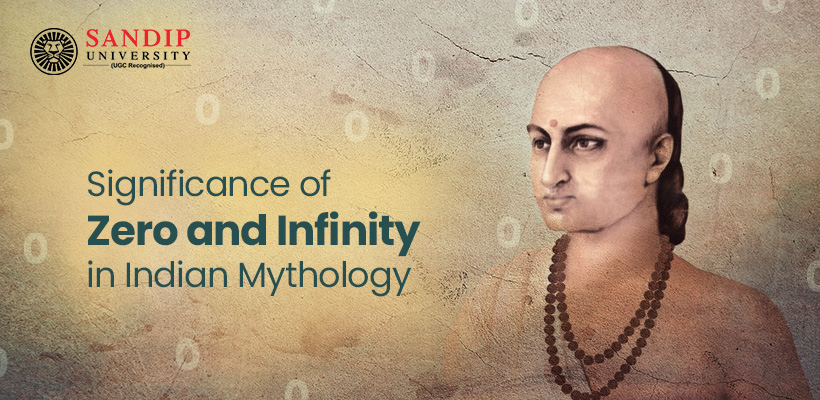The mathematical values zero and infinity have captivated the consciousness of many generations. Even today, students pursuing higher education from top colleges in Maharashtra in mathematics and science find the concept of infinity very intriguing. There are many mentions of zero and infinity in Indian mythology.
Deo-garh, located in Uttar Pradesh, is home to a 1500-year-old Hindu temple, one of the oldest in the region. The temple features a celestial scene of a man reclining on a serpent, surrounded by his wife, warriors, and sages, reminiscent of a royal court scene. The temple’s ruins serve as a testament to the creation of the world.
Hindus believe the world is created when Narayana awakens, reclining on a serpent with multiple-hoods. This is a visual representation of human consciousness, awakening the first moment of beginnings and limitless possibilities. The serpent, Adi-Ananta-Sesha, symbolises One-Infinity-Zero, and is the basis for Hinduism, Buddhism, and Jainism.
These worldviews emphasise rebirth, cyclical time, and a world without boundaries. Buddhism and Jainism share ideas of nirvana and zero, while the Greek worldview begins with chaos and order, while the Abrahamic worldview creates the world out of nothingness and has a definite expiry date. These worldviews inform the Western worldview, which is obsessed with organisation and fear of disorder and unpredictability, which Indians are comfortable with and thrive in.
Alexander the Great, after conquering Persia, met a sage in India who referred to him as a gymno-sophist or naked wise man. The sage believed that Alexander was wasting his one and only life doing nothing, while Alexander believed in rebirth and infinite lives, making achievements meaningless. This philosophical obsession with infinity and zero led to the development of the decimal system, which enabled the writing of vast numbers of huge value. The Arab sea-merchants who frequented India’s coasts saw value in this system and took it with them to Arabia. The Arab mathematician Khowarizimi suggested the use of a circle for zero, which eventually became ‘zero’.
Zero travelled from Arabia through Persia and Mesopotamia to Europe during the Crusades. In Spain, Fibonacci found it useful to do equations without using the abacus. The Italian government outlawed this Arabic numbering system, but the merchants secretly used it, making ‘sifr’ ‘cipher’, meaning ‘code’. The modern use of the number zero is less than a thousand years old and became popular less than 500 years ago.
Zero enabled people to conceptualise large numbers and helped in bookkeeping and accounting. In the 20th century, the binary system formed the foundation of modern computing. This contrasts with the Greek worldview, which begins as chaos until gods create order, definitions, boundaries, certainty, and predictability.
Conclusion
The present generation must be well connected with the ancient scriptures and their vast information. Technology teaches a person to move ahead in terms of new innovations, but one must remain connected with their origin. Only then, one will achieve the completeness of zero- one-infinity.

